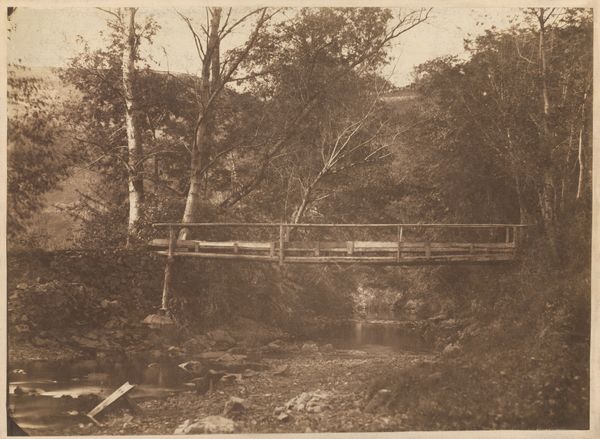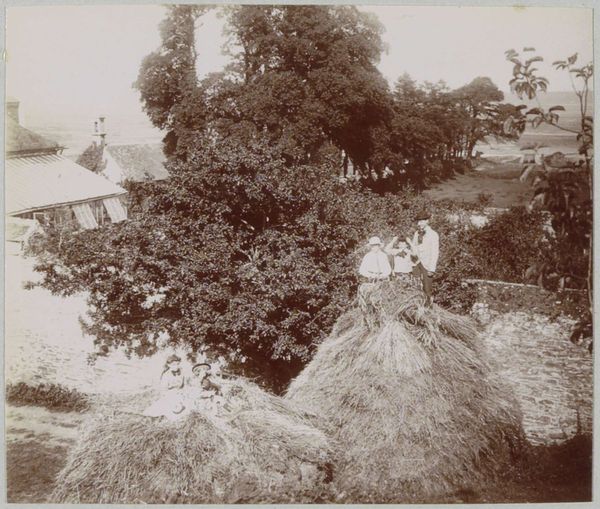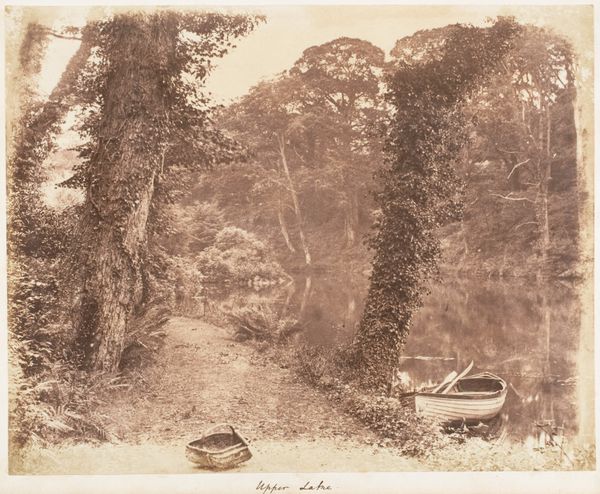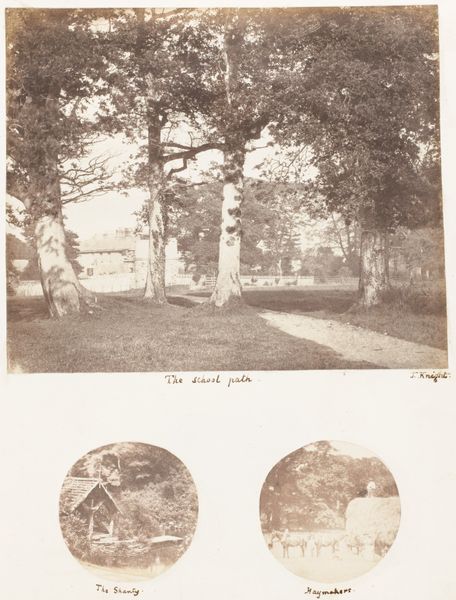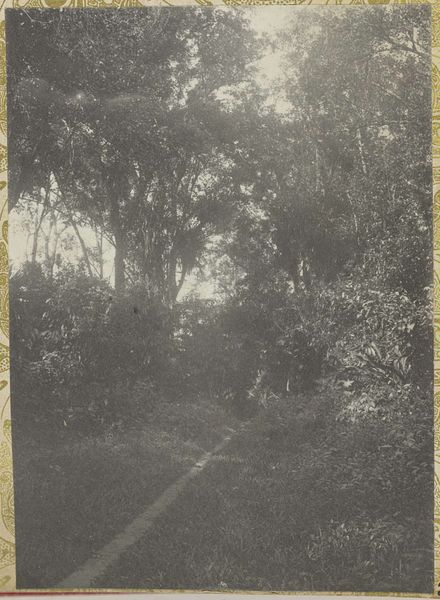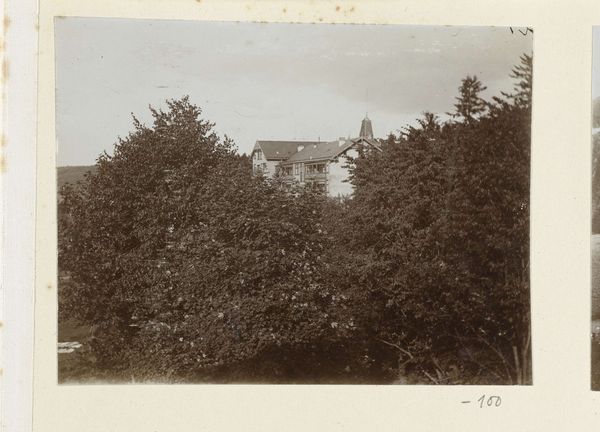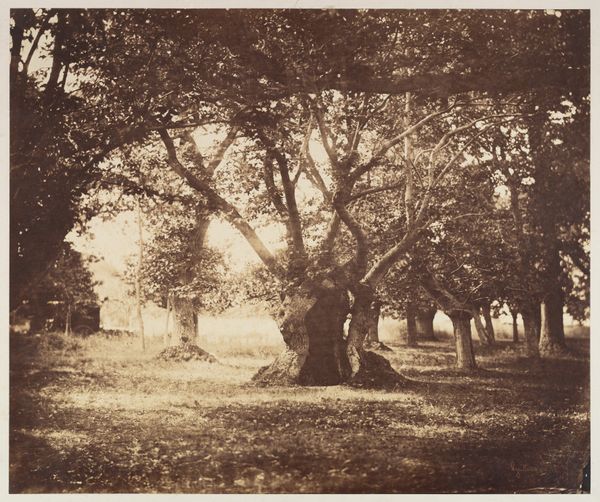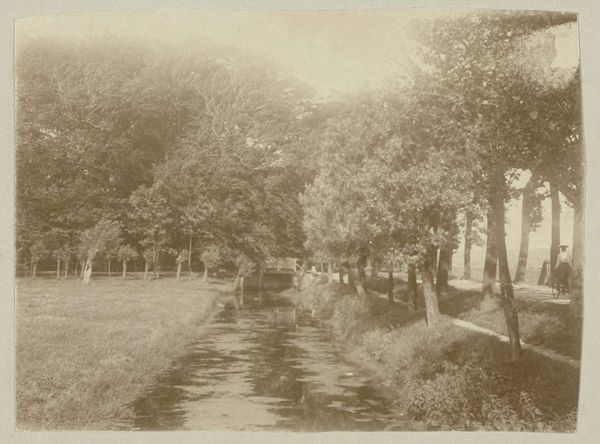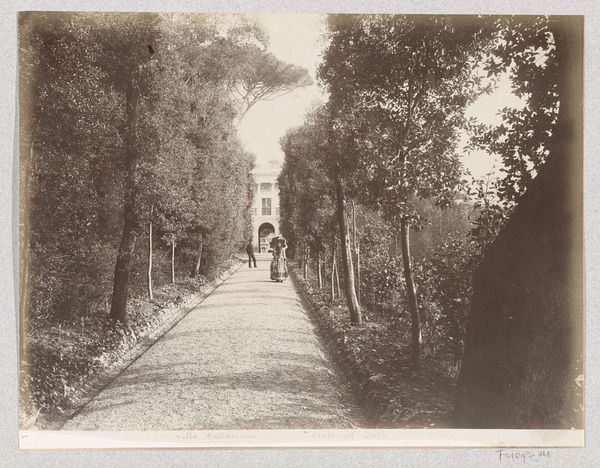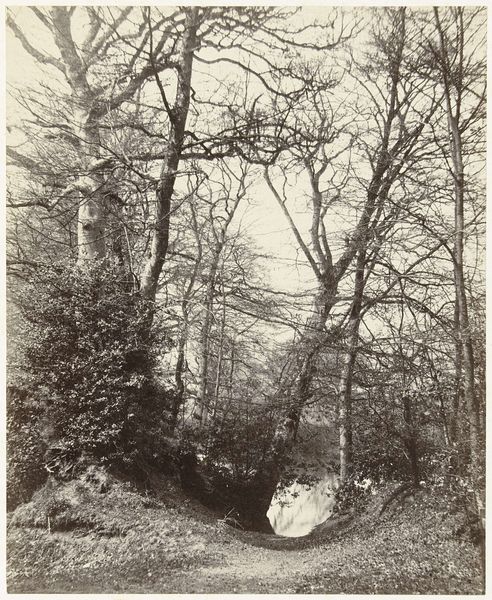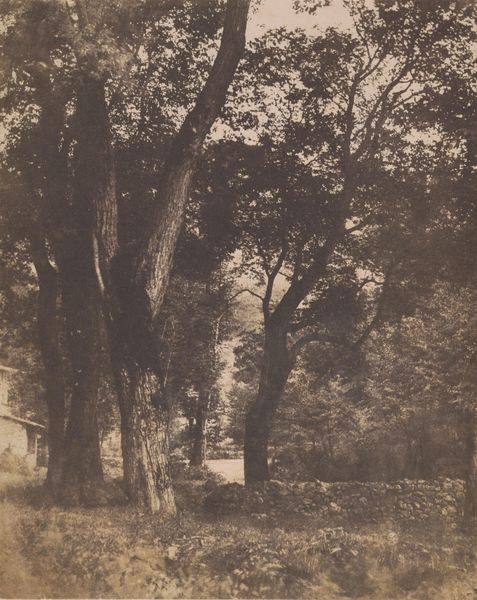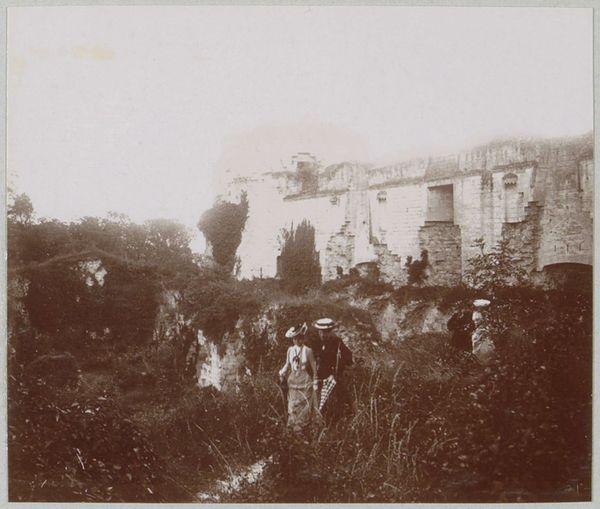
Dimensions: Image: 16.1 × 21.2 cm (6 5/16 × 8 3/8 in.)
Copyright: Public Domain
Editor: This is "Cureuleo Meadow," a photograph taken between 1853 and 1856 by John Dillwyn Llewelyn. The scene is so textured, full of detail... it almost feels like you could step right into that sun-dappled clearing. What symbols or ideas emerge for you when you look at it? Curator: Immediately, I'm struck by the subtle but pervasive presence of mortality. Look at the skeletal trees, the way the light illuminates their bare branches. Do you see how that starkness contrasts with the dense undergrowth? It’s as if the photograph is a visual meditation on the cyclical nature of life and death. Editor: That’s a great point! The man standing in the middle—is he a symbolic figure too? Curator: Absolutely. In pictorial traditions, figures within landscapes often represent humanity’s relationship to the natural world. He’s quite small in relation to the trees, isn’t he? Almost engulfed. This suggests perhaps the power of nature to dwarf the individual, a recurring theme during the Victorian era, reflecting the uncertainties brought about by rapid industrialization. The photograph is, in essence, wrestling with ideas of permanence and transience. What do *you* make of the subdued palette? Editor: It makes the scene feel very dreamlike. A bit faded and distant. Curator: Precisely! It recalls a sense of memory. Llewelyn, through his lens, offers not just a view but an experience – an introspective journey through nature imbued with profound cultural symbols and meditations on existence. Editor: This photograph now feels richer. It’s more than just a landscape; it's a complex commentary about our place in the world. Curator: Exactly. And these layers are what make art so compelling!
Comments
No comments
Be the first to comment and join the conversation on the ultimate creative platform.
